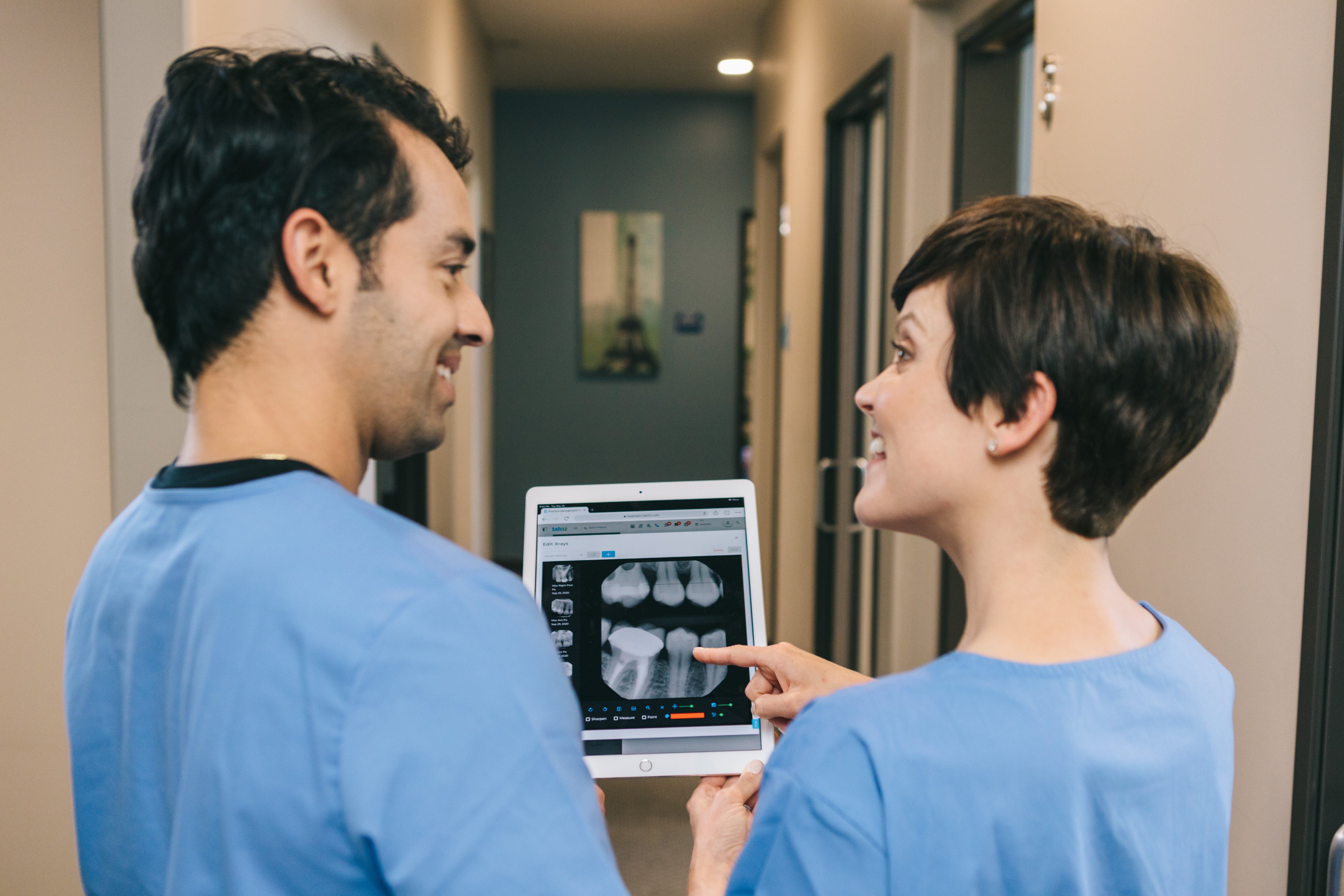
Selecting and implementing dental imaging software can be overwhelming.
Should you go with the software that comes with your equipment or implement an open-source one for added flexibility? Where should you store the images, and how do you calculate the long-term costs? Will your staff be ready for the transition, and how do you make adoption a breeze?
Here are the key factors to consider when selecting the right dental imaging software for your practice:
Your software should allow you to enhance, manipulate, and annotate images with easy-to-use editing tools. It should also offer 3D imaging capabilities for accurate measurement and effective disease detection.
Poor image quality can impact your ability to make accurate diagnoses. Additionally, your software should support various image types like X-rays, pano, and photos and file formats while allowing you to compare images side by side to plan treatments and track progress.
A cloud-based solution gives you the accessibility, flexibility, and scalability to grow your practice. You can view dental images and address patient concerns no matter where you are. Moreover, software updates are part of your subscription plan, helping you stay relevant with the latest features without added costs.
Your software is only as good as your staff’s ability to use it. An intuitive user interface and simple navigation help encourage adoption and minimize the learning curve so your team can become productive quickly. Ease of use also helps reduce staff onboarding and training costs in the long run.
Your software must comply with HIPAA regulations and follow the highest security standards (e.g., NIST-800, SOC 2). The vendor should provide frequent updates and patches as part of the subscription plan to help you stay ahead of threats and avoid hefty penalties.
You should be able to store image files securely on a cloud dental imaging platform as part of your subscription. The software should allow you to share images easily and securely within your practice and with external healthcare professionals with advanced access controls.
Your imaging software should integrate seamlessly with your dental practice management platform and sensors of your choice. For example, tab32’s Imaging Studio™ uses open-source TWAIN technology, which makes the software compatible with any equipment. This flexibility allows you to upgrade your hardware without costly and time-consuming data migration.
Moving to the cloud is often complex, costly, and labor-intensive. A provider with extensive experience and expertise in handling cloud data migration can help ensure a seamless and secure transition so nothing gets dropped during the process.
Setting up your system is just the beginning. Your vendor should provide ongoing support and help you with staff training to ensure you can get the most out of the dental imaging software for as long as you use the platform.
Cheaper isn’t always better. To understand the true cost of the software, consider ongoing maintenance, upgrades, hardware costs, staff training, scalability, and patient experience to ensure it’s indeed helping you optimize your practice’s profitability and ROI.
Should your dental imaging software be part of an all-in-one dental practice management solution or a standalone application? tab32 gives you both options, so you can choose one that works best for you. For example, you can purchase our plug-and-play web-based version and install it with just a few clicks. You don’t have to worry about compatibility issues or reconfiguring existing software or hardware.
Your dental imaging software is part of the ecosystem of the tools you use to run your practice. To understand its ROI, you must consider how it works with all the components to help you reduce costs and drive revenue over the long run.
All the factors we discussed above contribute to helping you improve operational efficiency, ensure data security, enhance the patient experience, and improve diagnostic accuracy and treatment outcomes. The right dental imaging software should also support your long-term business roadmap so you can grow your practice without going through a costly migration.
Request a demo to see how tab32’s Imaging Studio can meet your current imaging needs and pave the way for long-term success.
These Stories on Dental Xrays - Imaging & Radiology
No Comments Yet
Let us know what you think